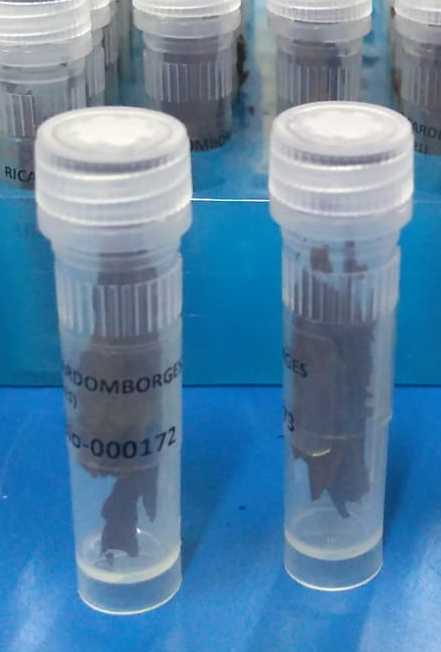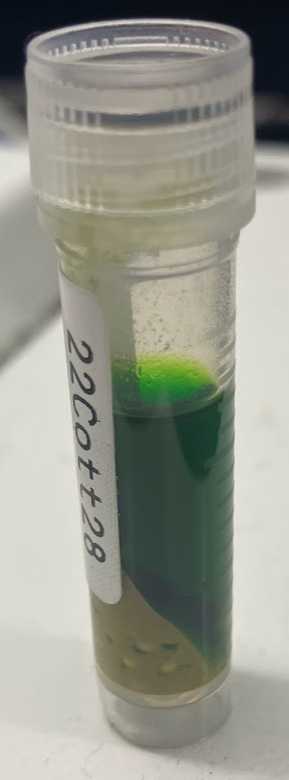(official) Extraction of Herbarium material for chemical profiling - Protocol #1
Ricardo M. Borges
Abstract
From the perspective of the documentation of plant biological diversity, herbaria are the repository of intraspecific and interspecific variability. The rich assortments contained in these collections essay the diversity over time and space, in addition to fulfilling a referential function, keeping material testimonies of works in different areas of knowledge. This project aims to establish an integrated platform for the development of the application of chemotaxonomy as a classificatory parameter using samples from botanical collections. For this, this project proposes the investigation and application of quality control samples and analysis using a validated method following an analytical rigor that allows data obtained from different batches to be evaluated altogether. With the optimization and validation of the method, it is expected to establish a unique procedure, which can be adopted by other research groups that are interested in contributing to a progressive growth of analytical data from samples collected in herbaria in Brazil and in the World; this includes the logistics for disseminating the quality control samples for batch corrections. Initially, Solanaceae species will be used as proof of concept. Thus, it is hoped that it will be possible to point out the metabolic distinction in the form of biomarkers resulting from multivariate analyzes that are characteristic of genera and species within the Solanaceae family. This project will also allow the mass cataloging of NP of the analyzed samples; all identified compounds will have their spectral data submitted to open databases/repositories. Still, it will be possible to integrate efforts in the search for organisms and compounds of high value from different natural sources or inspired by them, applying chromatographic, MS and NMR techniques, in combination with the methodologies of dereplication and chemometric analysis and with the aid of studies using in silico molecular modeling.
Steps
Sample preparation
Organize every sample that will be used in each study into an EXCEL Sheet ;
-
include information and comments on every sample
-
have information about classification grouping on every sample
-
each sample should also have the filename for their analytical data indexed (these can be added afterward)
-
this file might/should be used as Metadata for the study
-
Column Headers: Sample Number - Sample Name - Sample Group Info - ETC(...) - Comments - MS_filenames - NMR_filenames
(Optional; to be evaluated) Add a column for random values (=Rand()), and sort the list of samples using the random values column;
- This order must be followed up to the data acquisition step
Include spaces for the Quality Control Samples (External QC) and empty 2 ml Screw Cap Microtubes for the Blank samples ;
- The external QC sample (calibrated extract of Green Tea) can be acquired from Ricardo M. Borges (UFRJ-IPPN) upon request. contact (e-mail: ricardo_mborges@ufrj.br).
Materials to be used
-
2 ml Screw Cap Microtubes (high quality; e.g. SSibio) for Homogenizer (e.g. FastPrep MPBio)
-
2 ml Microtubes ( Eppendorf Quality )
-
Analytical Clean ( new ) 1 mm Zirconia Beads (e.g. Biospec) > tip: one can use a "ruler" to standardize the volume of beads to be used
-
Homogenizer
-
Vortex
-
Ultrasound bath
-
1000 ul automatic pipet e clean ( new ) tips > Remember that this protocol will produce samples for MS and only new (never before used) and clean materials should be used.
> Do NOT use anything washed with normal detergent.

<img src="https://static.yanyin.tech/literature_test/protocol_io_true/protocols.io.dm6gpjwkdgzp/kiy55pu63.jpg" alt="Beads and "Ruler"" loading="lazy" title="Beads and "Ruler""/>


Extraction Solvent
> (80%) Methanol - Ultrapure (MiliQ) Water (8:2, v/v)
> Calculate the volume (double) required
- Print labels according to the Excel Sheet organized at item 1 > including the Quality Control Samples and the Blank samples
2 ml Screw Cap Microtubes (high quality) labeled and kept in order according to the Excel Sheet
Extraction
Weight 50 mg of the dried plant material into 2 ml Screw Cap Microtubes according to the prescribed order;
- take note of every measured weight together with that same Excel Sheet (item 1)
- Do not assume mass to be around ~50 mg
Add 200 ul ( the equivalent of 200 ul ) of Zirconia Beads to EVERY sample (in the 2 mL Screw Cap Microtubes), including the Quality Control Samples and the Blank samples;
Add 1.5 ml of the extraction solvent to EVERY sample, including the Quality Control Samples and the Blank samples;
Homogenize ( FASTPrep ) EVERY sample, including the Quality Control Samples and the Blank samples, for 1 minute using the highest velocity;
- repeat this step, but alternate the homogenization with an ice bath
Once every sample is homogenized, Centrifuge EVERY sample thoroughly at the maximum speed available for 15 minutes, and, if possible, at 4oC;
Separate 750 uL (0.750 mL) of the supernatant of EVERY sample, including the Quality Control Samples and the Blank samples, into new labeled 2 ml microtubes ;
Extraction (repeat)
Add an ADDITIONAL 750 ul of the extraction solvent to EVERY sample, including the Quality Control Samples and the Blank samples;
Vortex EVERY sample, including the Quality Control Samples and the Blank samples, for 30 second;
Sonicate EVERY sample, including the Quality Control Samples and the Blank samples, for 10 minutes;
Once EVERY sample is mixed, centrifuge them thoroughly at the maximum speed available for 15 minutes, and, if possible, at 4oC;
Separate 750 uL (0.750 mL) of the supernatant of EVERY sample, including the Quality Control Samples and the Blank samples, into those SAME labeled 2 ml microtubes (item 8);
Quality Control
(OPTIONAL)
Now that one has every sample extracted 2 times into the same labeled 2 ml microtubes, it is possible to create the POOL Quality Control Samples
- Get 5-10% of every sample and pool them together into a clean and labeled (higher volume; e.g. 20 ml) vial;
- Vortex the Pool QC sample thoroughly;
- Aliquot 1.5 ml (to match 2x 750 ul similarly to the real samples) of this Pool QC sample into different clean and labeled 2 ml microtubes;
- Allocate those aliquoted Pool QC samples to their prescribed place in the initial Excel Sheet in the defined order;
If the user has the External QC (from Ricardo M Borges)
The External QC sample has 400 mg of the calibrated Extract of Green Tea. Data is available upon request.
- dilute and aliquot to get different samples of 5 mg into microtubes
- Allocate those aliquoted External QC samples to their prescribed in the initial Excel Sheet in the defined order ( item 1 )
Evaporate the sample set to dryness using a Speed Vac;
Done
Once every sample is dry and in order, they are ready for analytical data acquisition .

